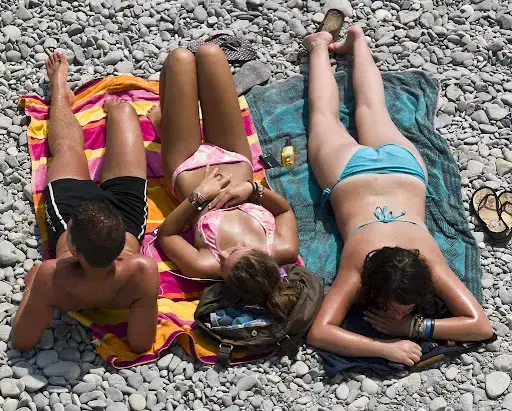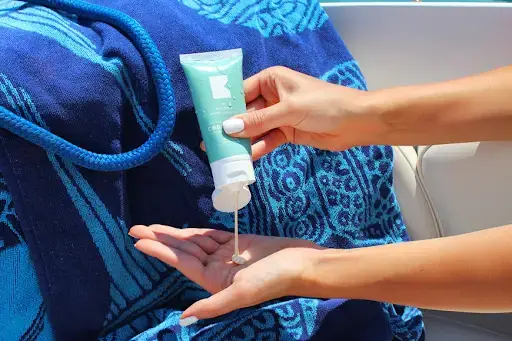The sun’s rays will hit you as soon as you go outside, but your clothing should limit the exposure to a harmless, small amount.
This doesn’t work for tanning because your semi-nude skin during the session will not provide you with that level of protection. If you don’t take care of UV-related factors properly, your health may be at risk.
The range of products that cause little or no damage to skin has been explained in detail.
WHAT IS SO IMPORTANT ABOUT THE UV INDEX?

There is no sense in trying to avoid the UV rays. You can’t avoid them because they are part of sunlight.
However, you can control the level of exposure by tanning under a good UV index. This refers to the intensity and duration of UV rays. The sun’s intensity varies throughout the day, according to the weather.
The UV index, or UVI as it is also called, has a measurement system. The UV Index scale starts at 0. But don’t aim for that value when you next go outdoors to tan. This low value was only recorded at night.
Then, we have 1 and 2, which are the levels that do not cause sunburns. You might guess that they are the levels you should be exposed to when the weather is cloudy, without the heat of the sun.
The UV-rays are classified as moderate, high or alarming. Any UV rays above 11 are considered extreme and can cause sunburn.
You don’t have to try to predict the UVI with your eyes. These parameters should be included in daily weather forecasts.

HOW long to tan for each UV index?
Does a higher UV Index make tanning better?

Yes, in a sense. It is a known fact that a higher UV index will result in darker skin faster. That said, measures should be taken, and sunscreen of +30
You should see a UVA rating on the bottom of bottles that are good quality. You should aim for SF30 or SF50. They both have enough filtering power for up to 98% unwanted sun components, even if you are tanning in low UV indexes of 3 or 2. Dark-skinned people should be able to get away with a rating of SF15.
Reapply sunscreen every 2 hours. It’s important to not lose its protection.
Eat the right food in your meal

It might be a smart idea to expand your diet to include foods that will improve your ability to adapt to UV exposure.
Fruits and vegetables with red colors, such as apples, oranges or tomatoes, contain a lot of lycopene, an antioxidant that helps to strengthen your skin.
Polyphenols are another option for post-tanning skin health.
It is packed with anti-inflammatory qualities and soothes reddened areas. It also fights against the damage right within the cells. Polyphenols are pumped into your system immediately by a deep bite of fresh berries, or a sip of green tea and cocoa.
COVER-UP

If you want to avoid getting severely sunburned, don’t stay out in the sunlight for too long.
If you plan to spend the entire day on the beach, take frequent breaks and seek out some shade.
Do not forget to wear sunglasses and cover your top with a hat. Always prioritize maximum protection.
SCHEDULE ANNUAL REUNION WITH DERMATOLOGIST

We all don’t want to ruin a relaxing, enjoyable tan.
If you are a sun-lover, it’s a good idea to visit a dermatologist every so often to eliminate the possibility that cancerous cells could develop.
You can never be too cautious.
Be on the lookout for moles that are irregular or marks you suspect have not been there before. These can be signs of serious health issues and should be addressed as soon as possible.
CONCLUSION
Best UVI for tanning is 3-7. As you can see, tanning in the sun is a great way to get a beautiful skin tone. Let it be.
Find out what UV index you need to achieve the desired result. Be aware of side effects. To minimize sunburns, use a sunscreen that has a high SPF rating. You can now improve your tanning skills!


